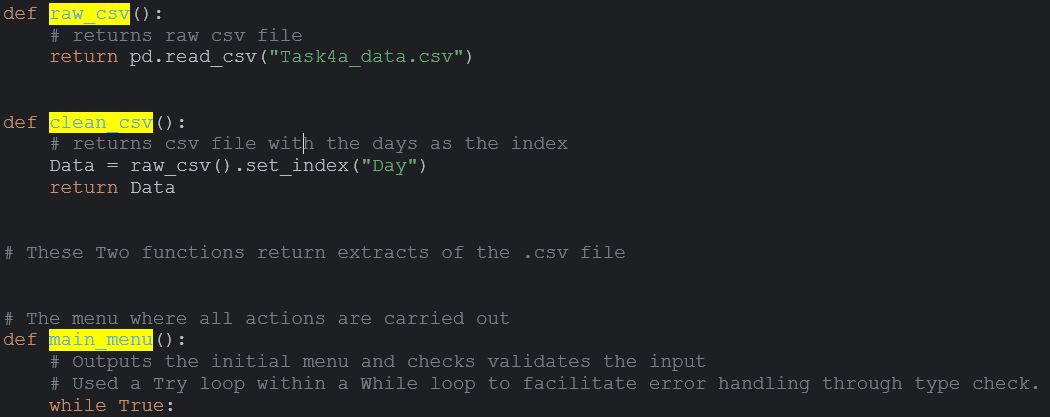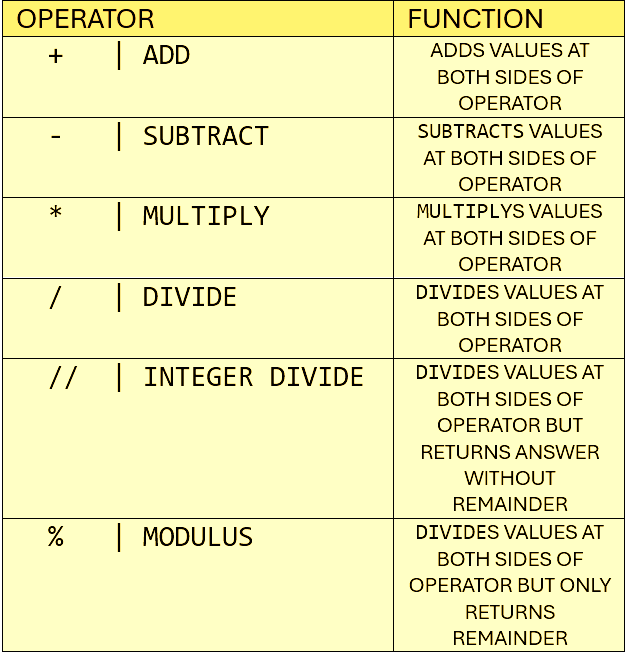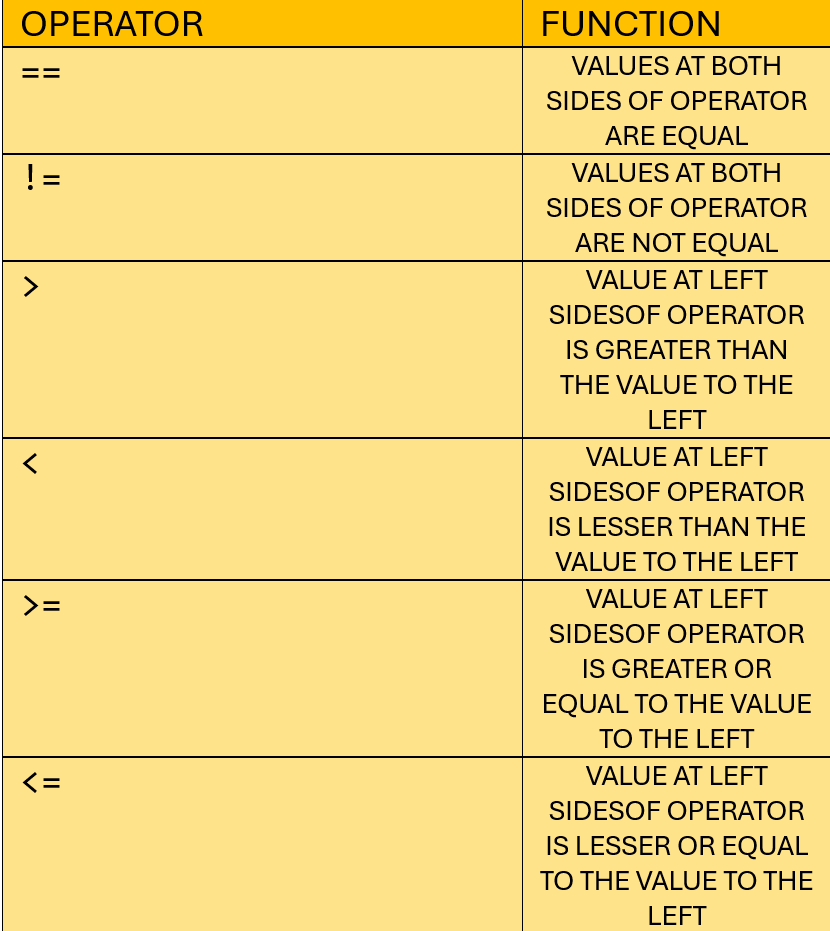Data Types
Constants and Variables
Naming Conventions
Mathematical Operators
Relational Operators
Boolean operators
Program Structure
Component Testing
Quality testing
Extra Information
Data Types
Data types are fundamental to programming as they define the kind of data that can be stored and manipulated within a program. Understanding data types is essential because it helps programmers to allocate memory efficiently, ensure data integrity, and perform correct operations on data.
Characters:
These can be any Letter, number or symbol
"HELLO THIS IS A STRING 123"
Integers:
These are whole numbers, positive and negative
1234567890 -5
Floats:
Any number with or without decimal values
1.2 0.94 34.5
These Data types together are usually used to create solutions and output readable information.
Booleans:
These are values that have only two states.
"TRUE | FALSE"
Constants and Variables
Constants:
A constant is a value that cannot be altered by the program during normal execution.
Variables:
A variable is a value that can be altered, changed and reformatted during the running of a program.
Naming Conventions
Why are Naming conventions so important?
Naming conventions make programs more understandable by making them easier to read. They can also give information about the function of the identifier-for example, whether it's a constant, package, or class-which can be helpful in understanding the code.

Operators
Mathematical Operators
These are the Operators used to carry out mathematical equations and actions.

Relational Operators
These are the Operators that define the relationship beween two values.

Boolean Operators
These are the Operators that are used to connect two or more conditions.

Program Structures
There are three constructs to use when designing a solution using code.
Sequence
Sequences are the main logical structures of programs. These are steps that are carried out in order and cannot be skipped otherwise the program or function will not work
Selection
These are tasks that are controlled by user defined choices or preset logical requirements, They allow for multiple outcomes of an action.
Iteration
These types of structure allow For a passsage to be run multiple times (iterated) Until a condition is met or it is manually stopped, There are many uses for this type of structure.
Component Testing
Software Testing
Definition:
Software Testing is the process of evaluating and verifying that a software application or system meets specified requirements and works as intended. It involves executing the software to identify any bugs, defects, or issues.
Importance:
Ensures the software is reliable and performs as expected.
Helps identify and fix bugs before the software is released.
Improves the quality and usability of the final product.
Increases customer satisfaction and trust.
Reduces maintenance and support costs by catching issues early.
Compatibility Testing
Definition:
Compatibility Testing is a type of software testing to check whether a software application or product works as intended across different environments, including different web browsers, operating systems, devices, and network conditions.
Importance:
Ensures the software functions correctly on all intended platforms and devices.
Provides a consistent user experience across various environments.
Identifies potential issues related to hardware, software, and network configurations.
Enhances the software's market reach by supporting multiple platforms.
Helps avoid user frustration and increases product adoption.
Final Product Testing
Definition:
Final Product Testing, often referred to as Acceptance Testing, is the last phase of testing before the software is released. It ensures that the software meets all specified requirements and is ready for deployment.
Importance:
Validates the overall quality and readiness of the software for release.
Ensures that all functionalities are working as expected.
Confirms that the software meets the business and user requirements.
Reduces the risk of releasing a flawed product to the market.
Provides a final verification to stakeholders before deployment.
EXTRAS
